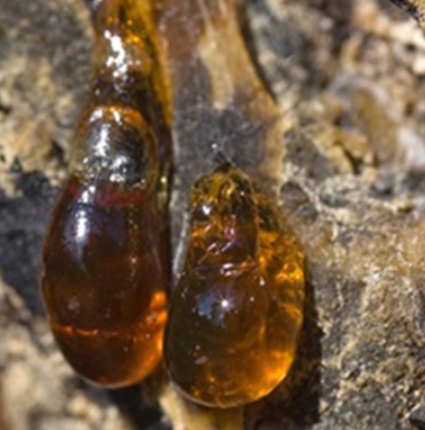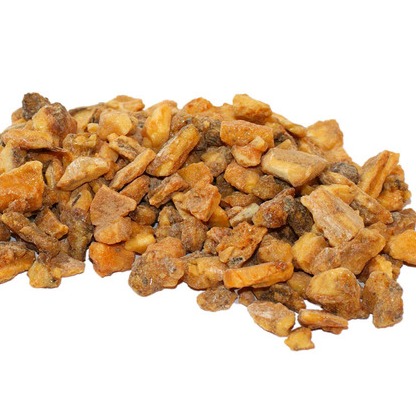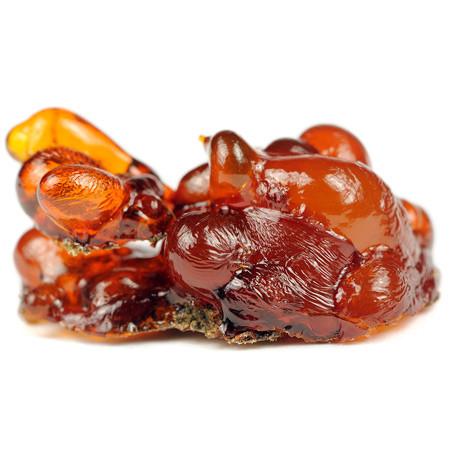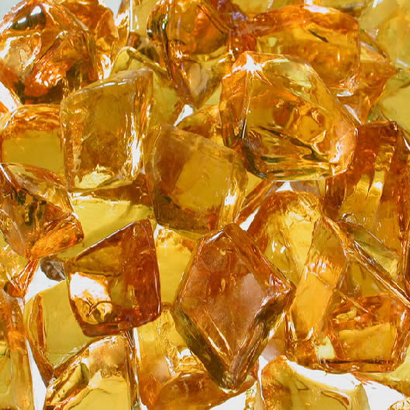.png)
.png)




Botanical names Styrax benzoin Dryand
Synonym Gum Benjamin
Source Resin
Family Styracaceae
Origin Sumatra
Processing Method Solvent Extraction with benzyl benzoate
Description / Color / Consistency This resin is a thick brown, viscous liquid.
Aromatic Summary / Note / Strength of Aroma Benzoin oil has a sweet, warm and vanilla-like aroma that is used as a base note with a medium aroma.
Blends With Cardamom, Frankincense, Myrrh, Myrtle, Neroli, Orange, Petitgrain and Sandalwood.
Product Abstract
The Benzoin tree originates in Java, Sumatra and Thailand where it can grow up to 8 meters (20 feet). Deep incisions are made in the trunk of the tree from which the grayish-colored sap exudes. When the resinous lump becomes hard and brittle, it is collected from the bark. It is then cleaned and processed by solvent extraction to produce the thick, resinous oil. Also known as Gum Benjamin, Benzoin is one of the classic ingredients of incense, and it has been widely used in perfumery. We recommend placing the bottle in a very hot water bath, changing the water frequently and once it is back to the liquid state, gently agitate before use.
History
Benzoin oil has been in use for thousands of years ago instances have been found of its use in some of the oldest civilizations of the world, particularly in their religious ceremonies and in their medicines, mainly due to its antidepressant, disinfectant, and aromatic properties. Benzoin oil is golden-colored, aromatic, thick, resinous oil obtained from the Benzoin tree whose scientific name is Stryax benzoin. Its chief components are Benzyl Benzoate, Benzoic Acid, Benzaldehyde, Coniferyl Benzoate, Cinnamic acid, and Vanillin. This last component gives it a vanilla-like aroma.
Harvesting/Extraction Information
Benzoin was first reported in 1832 by Justus von Liebig and Friedrich Woehler during their research on oil of bitter almond which is benzaldehyde with traces of hydrocyanic acid. The catalytic synthesis by the benzoin condensation was improved by Nikolay Zinin during his time with Liebig.
Common usage
Caution
Benzene and its derivatives, despite being highly aromatic, are toxic in nature. Therefore, ingestion or inhalation of excessive quantities can cause nausea, vomiting, headache, and lack of oxygen in the blood so it should be avoided.
Key constituents
Benzyl benzoate 51.7%
Benzyl alcohol 44.8%
(Z)-Cinnamyl (E)-cinnamate 2.1%
Cinnamic acid 1.8%
Ethyl cinnamate 1.1%
Benzoic acid 0.2%
Siam benzoin volatile compounds
Benzyl benzoate 38.9%
Benzyl alcohol 37.10%
Benzoic acid 19.1%
Ethyl cinnamate 0.7%
Quality
Benzoin resinoid is a sticky solid. To render it pourable, it is diluted to 50% in benzyl alcohol, benzyl benzoate, dipropylene glycol, or other solvent. Diethyl phthalate is less commonly used today as a diluent due to toxicity concerns. Small amounts of benzoic acid, benzyl cinnamate, ethyl cinnamate and vanillin may be added as odorous adulterants
Safety summary
Hazards Skin sensitization (low risk).
Cautions (dermal) Hypersensitive, diseased or damaged skin,
children under 2 years of age.
Maximum adult daily oral dose 368 mg
Maximum dermal use level 2%
Our safety advice Our oral maximum is based on a limit of 5 mg/kg for ‘benzoic acid equivalents’, which constitute up to 95% of benzoin. Our dermal maximum is a best-practice estimate for skin safety.
Regulatory guidelines A group ADI of 0–5 mg/kg body weight for benzoic acid, the benzoate salts (calcium, potassium and sodium), benzaldehyde, benzyl acetate, benzyl alcohol and benzyl benzoate, expressed as benzoic acid equivalents, was established by JECFA in 1996. The CIR Expert Panel considers that benzoic acid is safe to use in cosmetic formulations at concentrations up to 5%.
Organ-specific effects
Adverse skin reactions: In a modified Draize procedure on guinea pigs, benzoin ‘oil’ was skin sensitizing when used at 10% in the challenge phase. Benzoic acid and cinnamic acid have produced some allergic reactions. Benzyl benzoate and benzyl alcohol are listed in the EU as allergens, but the risk of allergy from either is negligible. In patch tests of 477 dermatitis patients, 45 (9.2%) had a positive reaction to compound tincture of benzoin. Of the 45, 14 had strong positive reactions, and 28 had cross-reactions to similar allergens. Up to 80% of patients sentitive to Peru balsam reacted positively to Siamese benzoin. Since both raw materials contain coniferyl benzoate this may be responsible, but it is not known to be present in benzoin resinoids.
Reproductive toxicity The reproductive toxicity data for benzyl benzoate, benzyl alcohol, benzoic acid and cinnamic acid do not suggest any restrictions in the use of benzoin resinoid in pregnancy beyond those outlined above.
Systemic effects
Acute toxicity No information found for benzoin. Benzyl alcohol and benzyl benzoate possess low acute toxicity . Carcinogenic/anticarcinogenic potential Gum benzoin was mutagenic in a mouse lymphoma assay (MLA), but not in Chinese hamster ovary cells. Gum benzoin produced CA in Chinese hamster lung cells, but was not genotoxic in a mouse micronucleus test or in the S. typhimurium TA135/pSK1002 umu test. It was not carcinogenic when fed to male rats at 125 or 250 ppm, to female rats at 250 or 500 ppm, and to male and female mice at 2,500 or 5,000 ppm for 104 weeks. The resinoid contains no known carcinogens, and the MLA and CHL results are false positives.
Comments
Analysis of the volatile compounds reveals little significant difference between the two types of benzoin, except for benzoic acid. Coniferyl benzoate, a non-volatile constituent of the raw gum (up to 75%), may contribute slightly to skin sensitization in some preparations of benzoin. Resinoids, and occasionally absolutes, are used in aromatherapy, though neither is soluble in fixed oil. There is no benzoin essential oil. Benzoin Siam mostly comes from Laos, from the Luang Probang area which used to be partly in Thailand. It is also grown in Cambodia and China. Because of its botanical name, benzoin is sometimes confused with styrax.